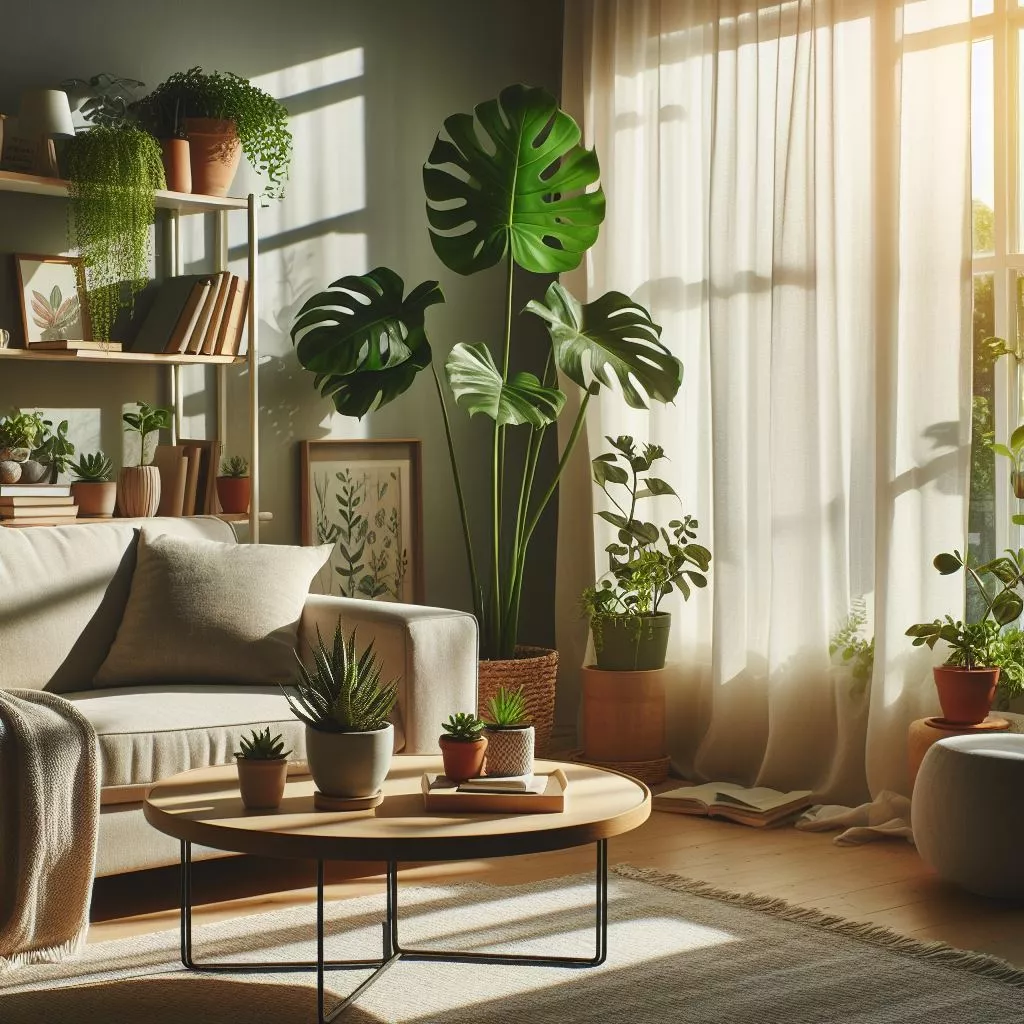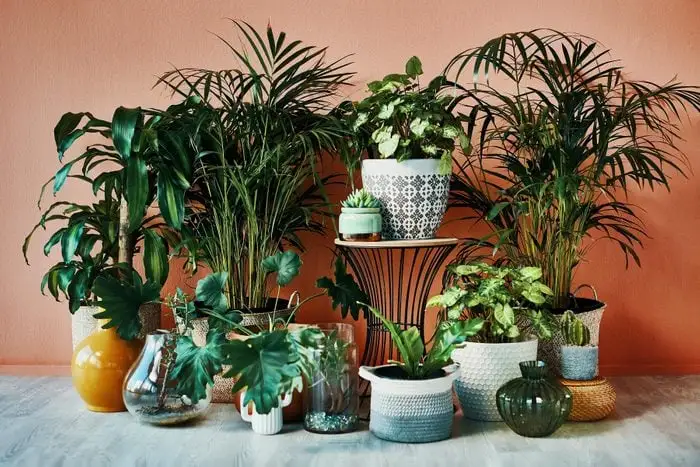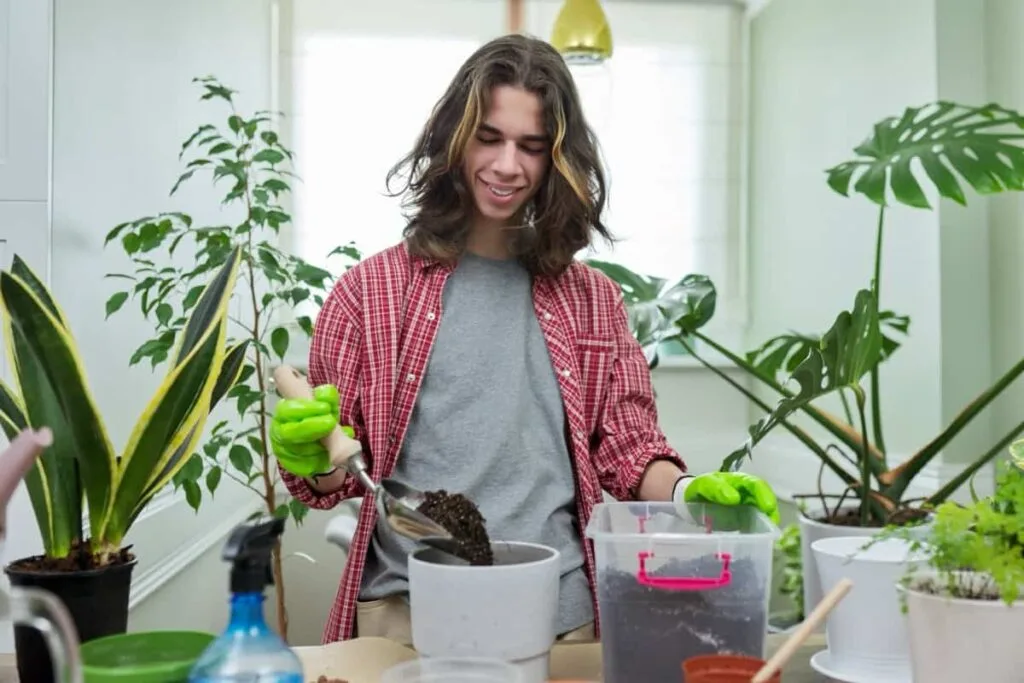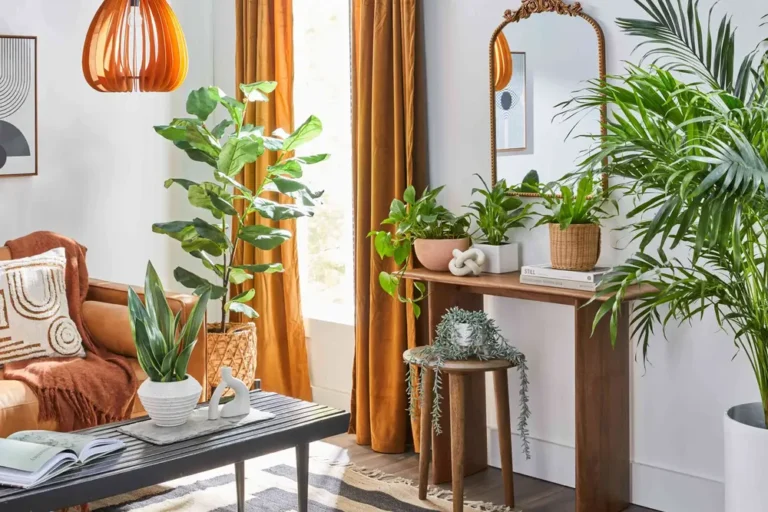Contents
Introduction
Have you ever walked into a room and been instantly captivated by a lush, vibrant display of plants? It’s not just the plants themselves that make a space look amazing—it’s how they’re arranged. Arranging plants for maximum visual impact can transform any room from dull and lifeless to bright and inviting. But how do you achieve that picture-perfect look without being a professional decorator or plant guru?
Don’t worry, you don’t need a green thumb or a degree in interior design to create a stunning plant arrangement. In this guide, we’re breaking it down into simple, easy-to-follow steps. Whether you’re a seasoned plant lover or just getting started, we’ll show you how to make your plants look their absolute best.
Why is arranging plants so important? Well, a well-thought-out plant display can add color, texture, and life to your space. It can brighten up a gloomy corner, create a cozy nook, or even become a focal point in your living room. Plus, the right arrangement can enhance the mood of your home, making it feel more welcoming and enjoyable.
We’ll cover everything from understanding the basic principles of visual design to picking the right plants and accessories. You’ll learn how to plan your space, choose plants that thrive in your environment, and arrange them in a way that maximizes their impact. And don’t worry—we’ll keep things straightforward and practical, so you can start enjoying your beautiful plant display in no time.
Ready to turn your plant collection into a show-stopping arrangement? Let’s dive in and make your space bloom with style!
Understanding Visual Impact
When it comes to making your plant arrangement truly stand out, there’s more to it than just placing a few pots around. Understanding how visual design principles work can help you create a setup that’s not only beautiful but also balanced and engaging. Don’t worry—we’re keeping it simple and straightforward, so you can get the hang of it without needing to become a design expert.

Let’s start with balance. This is all about how the elements in your arrangement are distributed. Imagine you’re setting up a display: you don’t want everything clumped in one corner while the rest of the space feels empty. Balance can be symmetrical, where things are mirrored on either side, or asymmetrical, where you create a pleasing arrangement by balancing different sizes and shapes in a non-mirrored way. Think of it like making sure your plant setup feels stable and harmonious.
Next up is proportion. This principle deals with the size relationships between plants and their containers. You don’t want a tiny pot next to a giant plant; it’s all about making sure everything works together in a pleasing way. Proportion also affects how plants relate to the space around them—large plants can make a big impact, while smaller plants can be used to create delicate details.
Emphasis is where you decide what the focal point of your arrangement will be. This is the part of the display that grabs attention first. Maybe it’s a strikingly colorful plant or an interestingly shaped container. By drawing focus to one main element, you create a visual highlight that makes the entire arrangement more compelling.
Lastly, there’s rhythm. This is about creating a sense of movement in your arrangement. It’s achieved by repeating certain elements or arranging plants in a way that guides the eye through the display. Rhythm can make your setup feel more dynamic and cohesive, helping to create a flow that’s easy on the eyes.
By keeping these basic design principles in mind, you can make sure your plant arrangement isn’t just a random collection of pots but a well-thought-out display that catches the eye and enhances your space. So let’s get started on putting these ideas into practice and making your plants look their very best!
Planning Your Space
Before you dive into arranging your plants, it’s crucial to take a step back and look at the space where they’ll be living. Proper planning can make all the difference between a chaotic mess and a beautifully organized plant display. Let’s break it down into simple, actionable steps to help you get started.
First up, assessing your area. Start by measuring the space where you want to place your plants. Knowing the dimensions will help you choose the right size and number of plants. Pay attention to the light levels too—some plants thrive in bright, sunny spots, while others prefer low light. Identifying these key factors will guide your plant selection and arrangement. Also, look around for any existing focal points or features in the room, like a fireplace or a window, that might influence where you place your plants.
Next, think about defining your style. What kind of look are you going for? Whether it’s a sleek, modern vibe or a cozy, rustic feel, your plant arrangement should match the overall style of your space. Choose a design theme that complements your décor. For instance, tropical plants with large, vibrant leaves can enhance a modern, airy room, while succulents in earthy pots might suit a more rustic setting.
Don’t forget about colors and textures. The plants and pots you select should harmonize with your existing furniture and wall colors. If your room is full of neutral tones, you might want to choose plants with vibrant foliage or colorful flowers to add some pop. Textures are just as important—mixing smooth ceramic pots with rough, textured baskets can add visual interest and depth.
In summary, careful planning ensures that your plant arrangement not only fits the space but also enhances it. By measuring your area, defining your style, and coordinating colors and textures, you’re setting the stage for a stunning and harmonious plant display. Now, let’s move on to choosing the perfect plants to bring your vision to life!
Choosing the Right Plants
When it comes to making your plant arrangement shine, selecting the right plants is key. You don’t need to be a botanist to choose plants that will look great in your space; you just need to know a few basics. Let’s break it down into easy steps to help you pick plants that not only look good but also thrive in your environment.
Start by selecting plants based on light and space. Every plant has its own light needs, so consider how much natural light your space gets. If you have a sunny spot, you can go for sun-loving plants like succulents or cacti. For shadier areas, choose plants that thrive in low light, like pothos or snake plants. Also, think about the size of the space. Large plants like rubber trees can make a bold statement in big rooms, while smaller plants like ferns or succulents are perfect for tighter spots.
Next, think about incorporating variety. A mix of different plant types can make your arrangement more interesting. Combine plants with different leaf shapes and sizes to create a dynamic look. For example, pairing a tall, spiky plant with a trailing one can add contrast and texture. Don’t forget about color! Mixing plants with different shades of green, or adding in some flowering varieties, can bring vibrant pops of color to your space.
Consider plant textures as well. Some plants have smooth, glossy leaves, while others have a more matte or fuzzy texture. Mixing these textures can add depth and visual interest to your arrangement. For instance, a sleek, modern-looking plant like a ZZ plant can contrast beautifully with the soft, feathery foliage of a fern.
Lastly, think about plant care requirements. Choose plants that match your ability to care for them. If you’re a busy person or new to plant care, opt for low-maintenance plants that require minimal watering and care. On the other hand, if you’re an avid plant lover with time to spare, you might enjoy caring for more demanding species.
By carefully selecting plants that fit your light conditions, space, and personal style, you can create a plant arrangement that not only looks fantastic but is also easy to maintain. With the right choices, your plant display will be the highlight of your space, adding beauty and freshness to your home. Now, let’s move on to arranging these plants for maximum impact!
Techniques for Arranging Plants
Now that you’ve chosen the perfect plants for your space, it’s time to dive into the fun part: arranging them! Proper arrangement can make a huge difference in how your plants look and feel in your home. Don’t worry—these techniques are easy to grasp and will help you create a visually stunning plant display.

Let’s start with layering and height variation. To add depth to your arrangement, mix plants of different heights. Place taller plants at the back or center of your arrangement and shorter plants in front or around the edges. This creates a sense of depth and prevents the display from looking flat. You can also use plant stands or shelves to elevate some plants, which not only adds visual interest but also allows you to showcase a variety of plants more effectively. For example, a tall plant like a fiddle leaf fig can stand proud in the corner, while smaller plants like succulents can be placed on shelves or stands in front.
Next, try grouping and clustering your plants. Instead of spreading them out individually, arrange them in groups to create a cohesive look. This approach works well for creating focal points or making a statement. Group plants of similar sizes or colors together to form a mini garden within your space. You can also mix and match different types of plants in clusters to create a dynamic and lively display. Just make sure there’s enough space between plants for them to grow and breathe.
When it comes to using containers and pots, the right choice can elevate your plant arrangement. Select pots that complement your room’s style and the plants’ needs. For a modern look, go for sleek, minimalistic pots. For a rustic or cozy vibe, choose textured or patterned containers. Make sure the pots are the right size for your plants—too small, and the plants might get root-bound; too large, and they might look out of place. Coordinating pot colors and materials with your décor can also tie the whole arrangement together.
To sum it up, using layering and height variation, grouping and clustering, and choosing the right containers will help you create a plant arrangement that is not only beautiful but also thoughtfully designed. With these techniques, you’ll be able to showcase your plants in a way that enhances their beauty and fits perfectly within your space. Next up, we’ll explore how to add those finishing touches to make your plant display truly shine!
Enhancing Visual Impact with Accessories
Once your plants are arranged, it’s time to add those extra touches that make your display pop! Accessories can elevate your plant setup from great to extraordinary, giving it a polished and unique look. Let’s dive into how you can use accessories to enhance the visual impact of your plant arrangement.
Start with decorative pots and planters. Choosing the right pot can make a big difference in how your plants look. Look for pots that complement the style of your room and the plants themselves. For a modern touch, opt for sleek, ceramic pots in neutral colors. If your space has a more rustic or bohemian vibe, consider using woven baskets or terracotta pots. Decorative pots can add texture and interest, turning a simple plant into a stylish statement piece. Don’t forget to use pot stands or risers to elevate some plants, which can help create layers and make the arrangement more dynamic.
Next, think about incorporating other design elements. Adding small touches like pebbles, driftwood, or decorative stones around the base of your plants can enhance their look and create a more cohesive display. For instance, a layer of white pebbles in a pot can add a clean, modern touch, while pieces of driftwood can bring a natural, earthy element to the arrangement. You can also use small sculptures or figurines to add a personal touch and make your display more interesting.
Finally, consider using lighting to highlight your plant display. Good lighting can make your plants look even more beautiful and draw attention to your arrangement. You might use spotlights to create a dramatic effect or string lights to add a warm, cozy glow. LED grow lights can also be a practical choice, providing the right amount of light for your plants while enhancing their visual appeal. The right lighting can turn your plant display into a focal point, especially in the evenings or in darker rooms.
In summary, using decorative pots, incorporating design elements, and adding lighting can greatly enhance the visual impact of your plant arrangement. These finishing touches help to bring out the best in your plants and create a display that’s not only beautiful but also uniquely yours. With these ideas, you’ll be able to add those extra details that make your plant setup truly stand out!
Maintenance and Care Tips
To keep your plant arrangement looking its best, regular maintenance and care are essential. Plants can be a beautiful addition to your space, but they require some attention to thrive. Here’s a straightforward guide to help you keep your plants healthy and your arrangement stunning.

Start with keeping plants healthy and attractive. Regular watering is crucial, but it’s important to do it right. Overwatering can be as harmful as under-watering, so make sure to check the moisture level of the soil before watering. Each plant has its own needs, so get familiar with what your plants require. Fertilizing is also important for providing essential nutrients. Use a balanced fertilizer appropriate for your plant types and follow the instructions carefully. Pruning is another key task; removing dead or yellowing leaves not only keeps your plants looking tidy but also promotes new growth. Cleaning the leaves can help them absorb more light and keep pests at bay. Wipe them gently with a damp cloth to remove dust and debris.
Next, adjusting arrangements over time is important as your plants grow. Plants can change quite a bit in size and shape, so be prepared to move them around or repot them as needed. Repositioning plants can help them get the light they need and keep your display looking fresh. For instance, if a plant starts to outgrow its spot, consider relocating it to a larger pot or a different area that suits its new size. Rotating plants periodically can also ensure even growth and prevent them from leaning towards the light.
Finally, keep an eye out for any pests or diseases that might affect your plants. Regularly check for signs of trouble, such as wilting, discoloration, or unusual spots on leaves. Early detection is key to addressing issues before they become serious. Use natural remedies or consult with a local garden center if you spot any problems.
By staying on top of watering, fertilizing, pruning, and adjusting your plant arrangement, you’ll ensure that your plants not only look great but also thrive in your space. Regular maintenance keeps your display vibrant and healthy, enhancing the visual impact and enjoyment of your plant arrangement. With these tips, you’ll be well on your way to keeping your plants beautiful and your space looking fabulous!
Case Studies and Examples
Looking for some inspiration or want to see how others have successfully arranged their plants? Exploring real-life examples can give you a better idea of what works and what doesn’t. Here’s a closer look at some successful plant arrangements and DIY ideas to spark your creativity.
First, let’s dive into successful plant arrangements. Take a look at various settings where plant arrangements shine, such as homes, offices, and public spaces. For instance, in modern homes, you might see large, dramatic plants like fiddle leaf figs or monstera plants used as statement pieces in living rooms or entryways. In contrast, smaller spaces like apartments often feature vertical gardens or wall-mounted planters to save floor space while still providing greenery. Public spaces like cafes and offices often use plants to create a welcoming atmosphere, with arrangements that might include a mix of large floor plants and smaller tabletop ones.
Analyze what makes these arrangements successful. Look at how different heights, colors, and textures are combined to create visual interest and balance. Notice how the plants are positioned to complement the room’s design and how accessories like decorative pots or plant stands are used to enhance the overall look. This will give you insights into how to tailor your own arrangements to fit your space and style.
For some hands-on inspiration, check out DIY ideas. There are plenty of creative ways to arrange plants that you can easily try at home. Start with simple projects like creating a hanging garden with macramé plant hangers or setting up a terrarium with small succulents and decorative stones. For a more ambitious project, consider building a custom plant shelf or a multi-tiered plant stand to display a variety of plants. Before-and-after photos can be particularly helpful here; they show how a space can be transformed with thoughtful plant arrangements. You might find that what was once a bland corner of your room can become a vibrant, lush focal point with just a few adjustments and additions.
In summary, exploring successful plant arrangements and DIY projects can provide valuable ideas and motivation for your own plant setup. By analyzing real-life examples and trying out creative projects, you’ll find new ways to enhance your space and make your plant display truly stand out. So, get inspired and start experimenting with your plant arrangements today!
Conclusion
You’ve now got the tools and knowledge to make your plant arrangement truly pop! From understanding the basics of visual design to selecting the right plants and enhancing your display with accessories, you’re well-equipped to turn any space into a plant paradise.
Let’s recap the key points to remember:
- Planning is Crucial: Measure your space, consider light levels, and define your style before you start arranging. This groundwork sets you up for success and ensures your plant display fits perfectly in your space.
- Choose Wisely: Select plants that match your light conditions and space requirements. Incorporate a variety of textures and colors to make your arrangement interesting and vibrant.
- Arranging Techniques: Use layering and height variation to create depth. Group plants for a cohesive look, and choose containers that complement your décor.
- Add Accessories: Decorative pots, additional design elements like pebbles or sculptures, and thoughtful lighting can elevate your plant display and make it stand out.
- Keep Up with Maintenance: Regular watering, fertilizing, and pruning are essential to keep your plants healthy and looking their best. Adjust your arrangement as plants grow and watch out for any pests or issues.
Remember, arranging plants is as much about personal expression as it is about design. Don’t be afraid to experiment and try different setups until you find what works best for you. The most important thing is to have fun with it and enjoy the process of creating a space that’s uniquely yours.
So go ahead, get started on arranging your plants, and let your creativity flourish. Your space is ready to bloom with style and vibrancy—happy planting!



